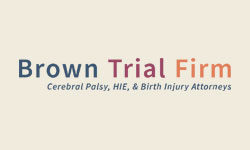Learn about risk factors for umbilical cord issues and common problems with umbilical cords that can lead to complications for babies and mothers
The umbilical cord plays a crucial role in delivering oxygen and nutrients to a growing baby, but issues can arise that put both mother and child at risk. Some factors can increase the likelihood of umbilical cord complications, like certain maternal health conditions, but oftentimes problems with the umbilical cord aren’t preventable.
This blog will help you understand if you’re at an increased risk of umbilical cord issues during pregnancy and explore some common problems that can lead to complications.
What does the umbilical cord do?
The umbilical cord carries life-giving blood to a baby while it grows inside the mother’s womb. The cord attaches from the baby’s stomach to the placenta, a disc-shaped organ in the mother’s uterus wall.
Cords come in different lengths and thicknesses, but their structure is the same inside. They typically have:
- 2 arteries bringing blood containing oxygen and nutrients to the baby
- 1 vein taking away waste products, deoxygenated blood, and carbon dioxide
These 3 blood vessels are cushioned by a gelatinous substance called Wharton’s jelly, which is all wrapped up in a membrane or sheath called the amnion.
The umbilical cord is the lifeline from mother to baby for the entire nine months of pregnancy and well into the birthing process. If anything goes wrong with the umbilical cord, the baby can lose some or all access to oxygen and nutrients.
Complications with the umbilical cord can lead to birth injuries and even stillbirth or maternal death without prompt medical intervention.
Risk factors for umbilical cord problems
These factors may increase your risk of umbilical or pregnancy cord problems, but they can realistically happen to any pregnant mother:
- Being pregnant with twins or multiple births
- Being over 35
- Being pregnant with your first baby
- Having used assisted reproductive technology (ART) to get pregnant
- Having umbilical cord issues in previous pregnancies
Common issues with umbilical cords
Below are some of the most common problems with umbilical cords that can lead to complications for both mother and baby.
The umbilical cord is too long or short
Umbilical cords can range in size from “no cord” to an impressive 300 centimeters. Normal or average cords are around 50–55 cm. If a cord is too long or too short, certain complications are more likely to occur.
- Long cord. Longer cords can cause fetal entanglement, knots in the umbilical cord (which can cause “compression” or choke off the baby’s supply of oxygen), and thrombi (blood clots). About 5% of umbilical cords are longer than 80 cm.
- Short cord. If an umbilical cord is too short—usually judged at less than 35 cm—the baby might not have enough cord to move around in the uterus, which helps stimulate growth. Of course, the baby’s movement usually lengthens the cord, so which one is truly to blame is not always clear. Short cords occur in 5% of American pregnancies and can cause delayed development or tears in the cord and even keep the baby from being born vaginally. Short cords are often seen alongside other congenital problems, so if detected, doctors should run tests. Short cords double the danger of stillbirth.
The umbilical cord doesn’t attach correctly to the placenta
Normally, the umbilical cord runs from the baby’s future belly button to the middle of the placenta, but sometimes the umbilical cord is not centered as it should be, a condition called abnormal cord insertion.
If the insert site is slightly off the center of the placenta, there’s no danger. But if the umbilical cord is attached to the side of the placenta or the umbilical cord is not attached to the placenta at all, the baby is at high risk for complications.
- Marginal umbilical cord insertion. Only 7% of pregnancies have what is known as “Battledore cord insertion” or marginal cord insertion. The umbilical cord connects within 2 cm of the placenta’s edge instead of near the center. Usually, this is not a problem—many women with this condition deliver healthy babies. As long as the baby is receiving a good flow of oxygen and nutrients from the mother, there is no need to worry. But marginal cord insertion can develop into velamentous cord insertion later in pregnancy, so it must be monitored carefully. Ultrasound should be able to spot this condition.
- Velamentous cord insertion. The cord implants itself next to the placenta, in neighboring tissue, and then travels to the placenta. There is no way to correct velamentous cord insertion, but as long as the baby is still receiving blood from the mother, the pregnancy can be successful, though studies have shown 1 in 4 end in miscarriage. This condition is 9 times more likely in twin or multiple-birth pregnancies. Can result in premature birth, decrease in fetal development, excessive bleeding during childbirth, fetal distress, and vasa previa.
- Vasa previa. When there are blood vessels in the uterus right in front of the area where the fetus needs to come out at the opening of the cervix, childbirth can rupture them. Vasa previa is a “high-risk” condition that can lead to excessive bleeding, fetal distress, and even stillbirth. C-sections are necessary when fetal distress is apparent. Vasa previa is very important to diagnose and monitor. If untreated, death is likely.
There are problems inside the umbilical cord
Some underlying factors, like a disease in the mother that causes easy clotting, can make problems inside the umbilical cord more likely. But for most of these complications, medical science isn’t completely sure why they occur, and doctors can only monitor the mother once the danger is known.
- Single umbilical artery (SUA). A healthy umbilical cord has three blood vessels: 2 arteries and 1 vein. Sometimes, one artery is missing because it never formed. Usually, SUA is only a concern when more complications are present—and it sometimes indicates that other congenital factors are present. 20% of SUA cases have associated anomalies. This complication can be diagnosed prenatally, so if it’s found, medical providers should aggressively test for other problems. SUA is present in 1% of single births and 5% of twin or multiple births.
- Cord hematoma or ulceration. A cord hematoma is when blood leaks out of the umbilical veins or arteries inside the cord. It can be caused by prenatal procedures. Ulceration is more severe—when these vessels rupture and the baby bleeds inside the womb. Currently, this complication is not detectable, but fetal distress should be apparent during the birthing process.
- Cord cysts. Whether a true or false cyst (pseudocyst), this complication is very rare—only found in 0.4% of pregnancies. These cysts are more common at the fetal end of the cord near the baby’s stomach, but they can be any shape and size along the cord. Cysts can be found in the first trimester. Cyst rupture is a danger during labor, and C-section delivery is recommended.
- Cord tumors. Umbilical cord tumors, either hemangiomas or teratomas, are extremely rare. They usually form on the placental end of the cord. They cannot be reliably diagnosed before birth; they just appear as a “cord mass” on ultrasound. An alpha-fetoprotein (AFP) test may be done, and if the number is high, there may be tumors.
- Blood clots. Umbilical cord thrombosis is when one of the blood vessels in the cord is blocked by clotted blood. It is most common in the umbilical vein. Since the blood flow to the baby is restricted, thrombosis requires prompt emergency treatment. This condition happens in an estimated one in 300 pregnancies.
The cord becomes compressed
If the umbilical cord is knotted, kinked, or squeezed tightly, even the gelatinous Wharton’s jelly can’t cushion the blood vessels enough to keep up the blood and oxygen flow to the baby. The umbilical cord is made to withstand quite a bit of twisting or kinking, so the baby is usually only in danger if the compression doesn’t allow oxygen to reach it for a long enough time.
- Cord knots. There are two types of cord knots: true and false. False knots are minor kinks in the cord. They are fairly common and cause few real problems. A fully kinked umbilical cord, known as a true knot, is much rarer—in only about 1% of pregnancies. When a true knot tightens, the baby’s oxygen supply is choked off, which can lead to brain damage and conditions like cerebral palsy and hypoxic-ischemic encephalopathy (HIE). A longer umbilical cord, more active baby, and greater amount of amniotic fluid (polyhydramnios) all contribute to a true knot. Luckily, these can be detected by ultrasound.
- Nuchal cord. Nuchal cord is when the umbilical cord is wrapped completely around the baby’s neck. A “double nuchal” is wrapped twice. This is somewhat common (see in more than 20% of pregnancies), and surprisingly, not as dangerous as it looks. As long as the cord isn’t compressed, the baby is still “breathing” through its belly button, not the head. A longer cord and induced labor are associated with nuchal cord, which can be detected by color Doppler or ultrasound.
- Cord stricture. A “narrowing” of a section of the umbilical cord, leading to constriction or blockage of the blood flow from mother to baby. The cause of umbilical cord stricture is unknown, and it cannot be diagnosed prenatally. The baby is usually stillborn.
- Cord prolapse. This condition happens during birth when the umbilical cord slips out of the birth canal either before the baby (overt prolapse) or alongside the baby (occult prolapse). Rupture of the amniotic sac can make prolapse more likely. Since the baby is squeezing against the birth canal as well, umbilical cord prolapse almost always causes cord compression and is treated as an obstetric emergency. C-sections are usually required.
Diagnosing umbilical cord complications
Umbilical cord conditions can increase the risk of birth defects, birth injury, or stillbirths. There are no treatments yet for most of these complications—medical providers rely on monitoring the problem and intervening if there is a risk to the health or life of a mother or her baby.
Ultrasonography is becoming more and more sophisticated; many complications can be detected early in pregnancy, even in the first trimester. But in America, there is no standard testing for umbilical cord complications at this time, though more and more are being discovered sooner than in years past.
Petitions have been proposed, but the best way of ensuring your baby isn’t at risk is to educate yourself and ask questions. Insist on testing if things don’t seem right.
FAQs about umbilical cord problems
Is a thick umbilical cord good or bad?
A thick umbilical cord isn’t necessarily good or bad—it depends on the causes and whether or not it affects the baby’s blood and oxygen delivery. In many cases, a thicker cord can be a normal variation and indicate a strong, healthy blood supply to the baby. However, in some instances, it may be linked to conditions such as gestational diabetes, which may require closer monitoring.
One recent study published in 2022 found that a thinner umbilical cord was associated with certain risk factors, such as oligohydramnios (low amniotic fluid) and meconium-stained amniotic fluid, but it found no increased risk for these conditions with thicker cords.
This suggests that umbilical cord thickness can be an important factor in assessing fetal health, with both excessively thick and unusually thin cords potentially indicating underlying complications. Doctors typically assess umbilical cord size and function during ultrasounds and at birth to determine if any additional monitoring or intervention is needed.
Can a short umbilical cord be seen on ultrasound?
Yes, a short umbilical cord can often be detected on an ultrasound, especially in the later stages of pregnancy. During routine ultrasounds, doctors measure the length of the umbilical cord and assess its positioning.
However, the exact length of the umbilical cord may not always be easy to measure accurately on ultrasound due to the way it coils and moves inside the uterus. If a short cord is suspected, doctors may recommend additional monitoring to ensure the baby is developing properly and to plan for a safe delivery.
Can velamentous cord insertion correct itself?
No, velamentous cord insertion does not correct itself, and there is no way to fix it medically. If you’ve been diagnosed with velamentous cord insertion, your doctor will monitor your baby closely and may order a C-section if they’re concerned the condition might harm your baby.
Did your baby suffer a birth injury from an umbilical cord problem?
If you feel that an umbilical cord complication wasn’t diagnosed or dealt with in a timely manner and your baby suffered as a result, trust your instinct—you may be right.
Contact experienced birth injury lawyer Laura Brown at Brown Trial Firm to schedule a free consultation today. She can sit down with you, answer your questions, and explain your next steps and legal options if she thinks you have a valid claim.


